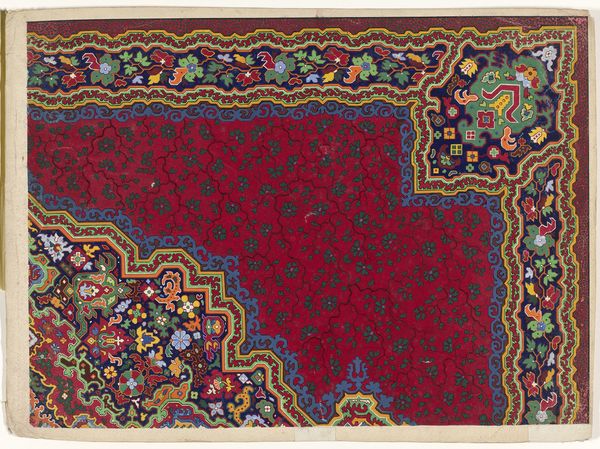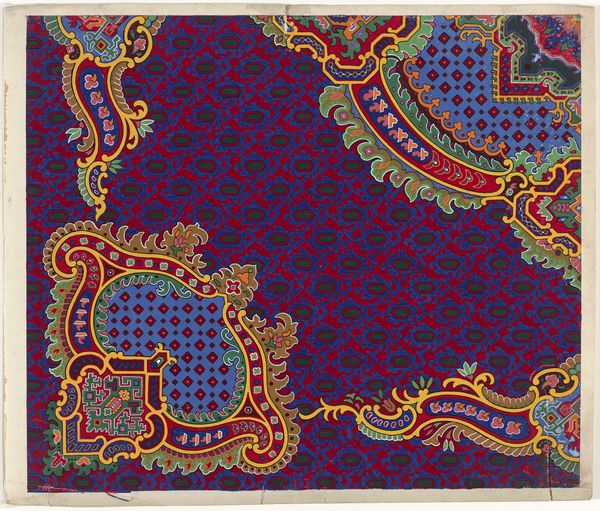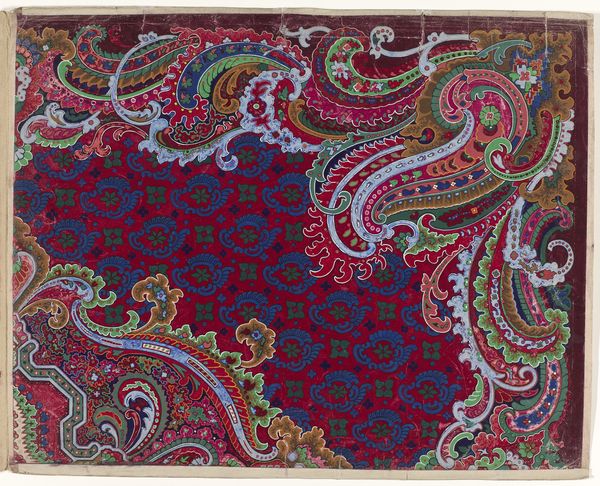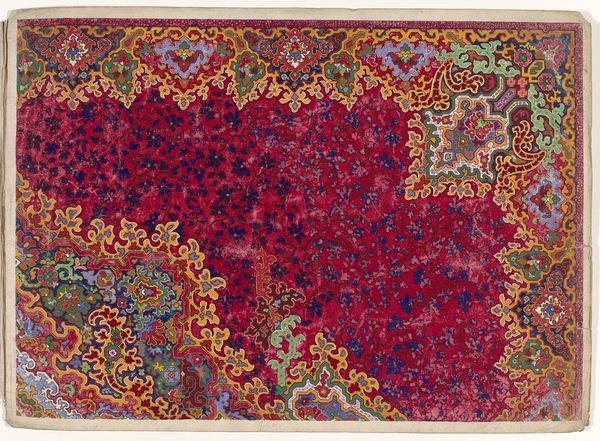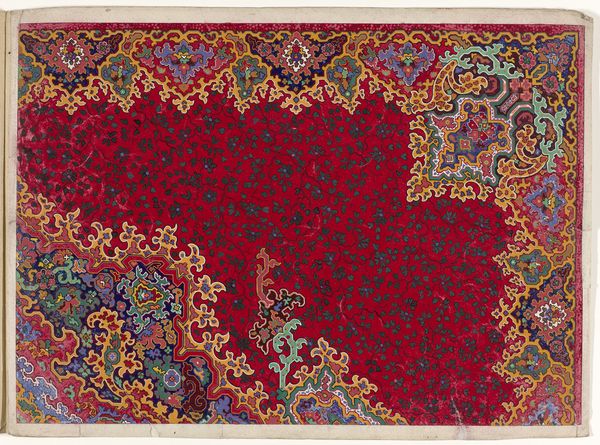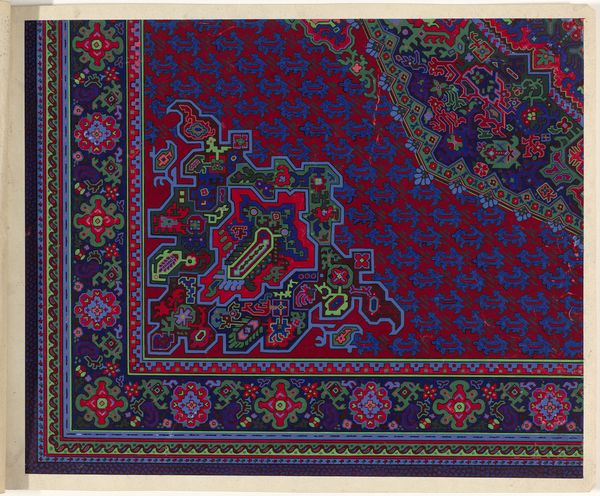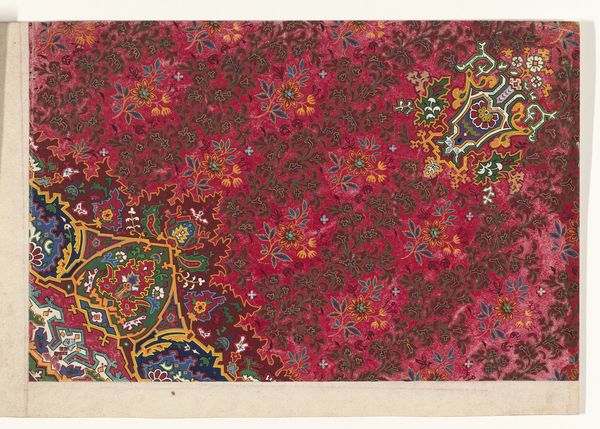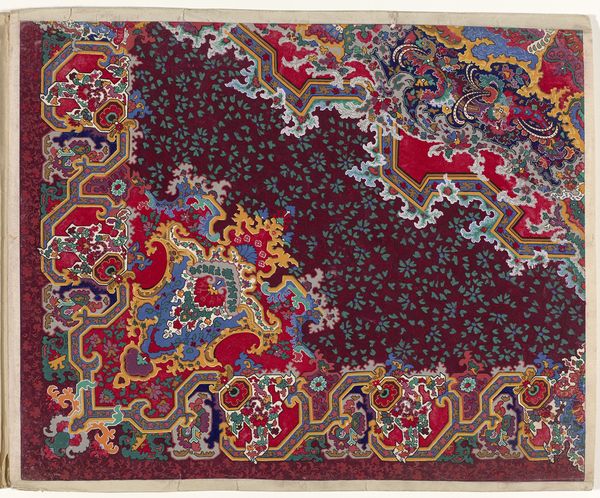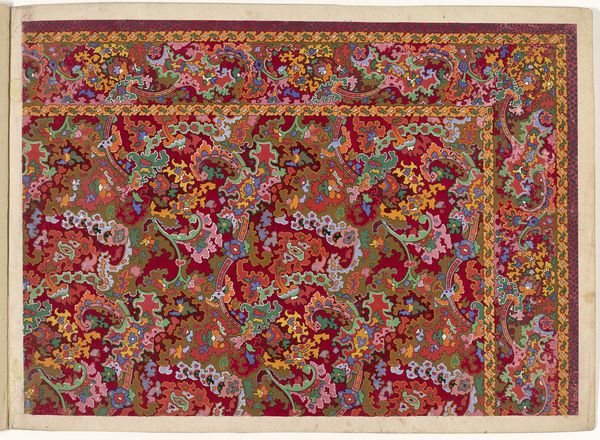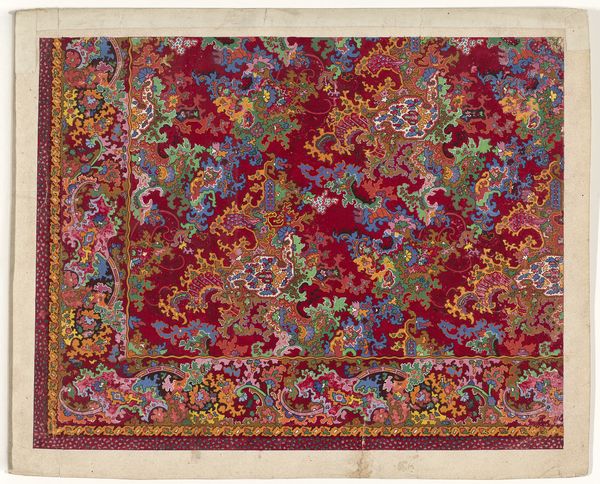
drawing, textile
#
pattern heavy
#
drawing
#
natural stone pattern
#
naturalistic pattern
#
pattern
#
textile
#
geometric pattern
#
pattern background
#
ethnic pattern
#
organic pattern
#
orientalism
#
repetition of pattern
#
pattern repetition
#
layered pattern
Dimensions: height 157 mm, width 201 mm
Copyright: Rijks Museum: Open Domain
Editor: This is "Ontwerp voor een tapijt," or "Design for a carpet," made by an anonymous artist sometime between 1854 and 1864. The medium seems to be drawing on textile, I’d guess. All those rich reds and floral elements make it feel luxurious, but also somehow...contained? How would you interpret this work? Curator: It's interesting you say contained. The date and orientalist style certainly suggest a lot about its social context. This design reflects the 19th-century European fascination with the "Orient," a constructed image fueled by colonial expansion and trade. Do you think this fascination translates directly into appreciation, or something else? Editor: I think it might be more than just appreciation. It almost feels like appropriation to me. There’s a power dynamic at play, isn’t there? Taking visual elements from another culture and re-contextualizing them. Curator: Precisely! These designs, while visually appealing to a European audience, also reinforced a sense of Western dominance. The production of these “exotic” goods in European workshops subtly asserted a cultural and economic authority. How do you think this piece, as a *design* and not necessarily a finished carpet, complicates that? Editor: Well, knowing it's a design makes me wonder about its intended audience. Was it purely aesthetic, or was there an intent to replicate it on a grander scale? The latter makes me feel even more icky. Curator: Exactly. The design stage implicates the institutions, the manufacturers, and the consumers in perpetuating those power structures, which museums often participated in, if they hold and exhibit this work. Thinking about the original cultural context helps unravel some of those thorny issues. It is a design for a textile - drawing upon an aesthetic while subtly laying the groundwork for socio-political influence. Editor: Wow, I never thought about carpets having such a complex history. It gives me a lot to think about in terms of artistic exchange and cultural representation! Curator: Indeed. It reveals how something seemingly beautiful and decorative can be deeply intertwined with social, political, and historical forces.
Comments
No comments
Be the first to comment and join the conversation on the ultimate creative platform.
